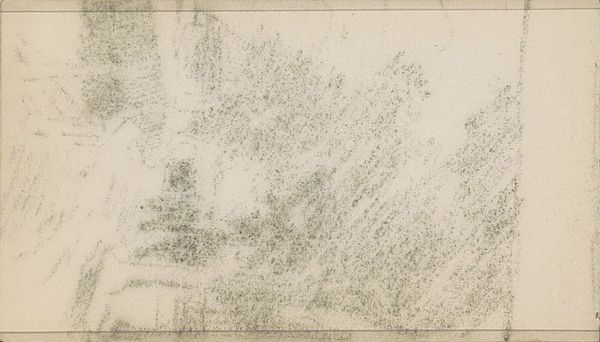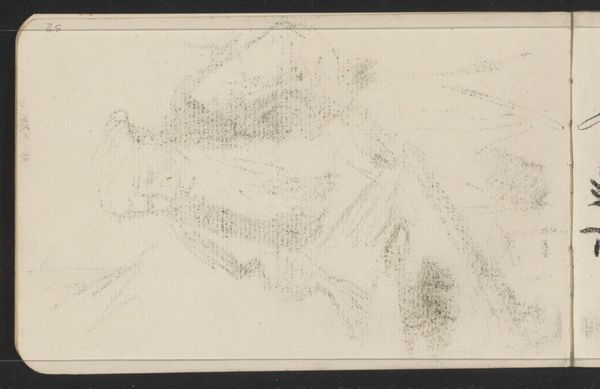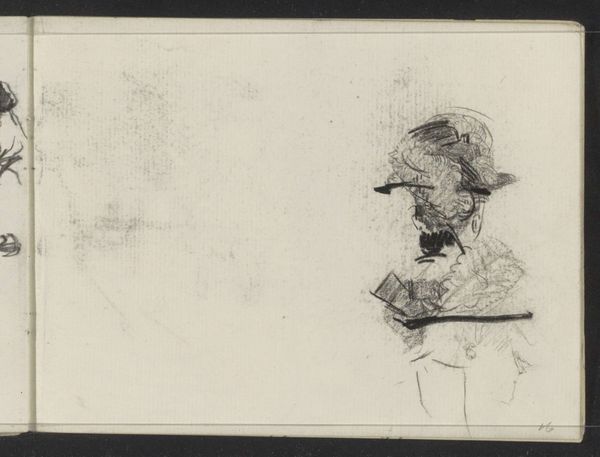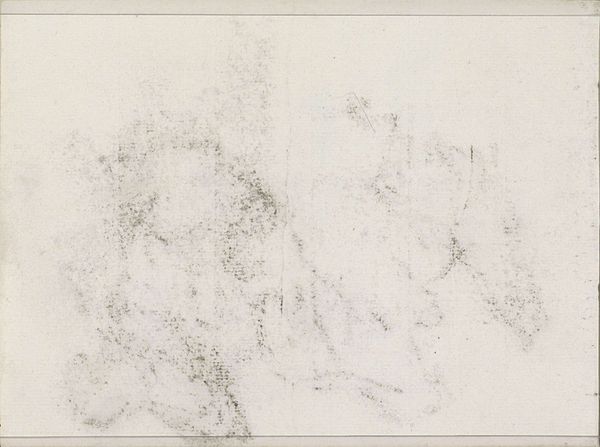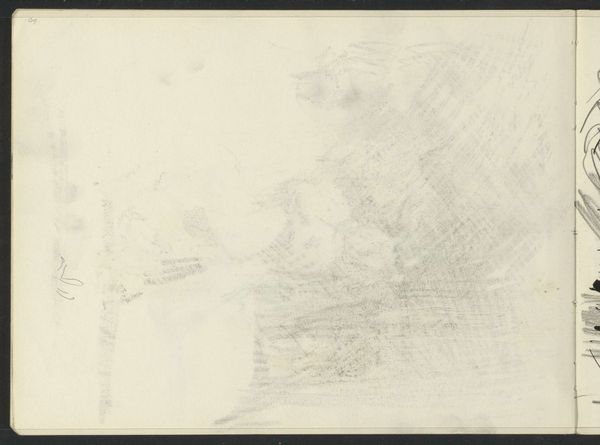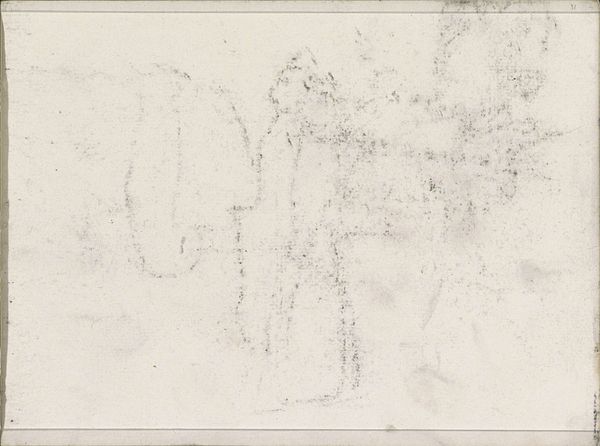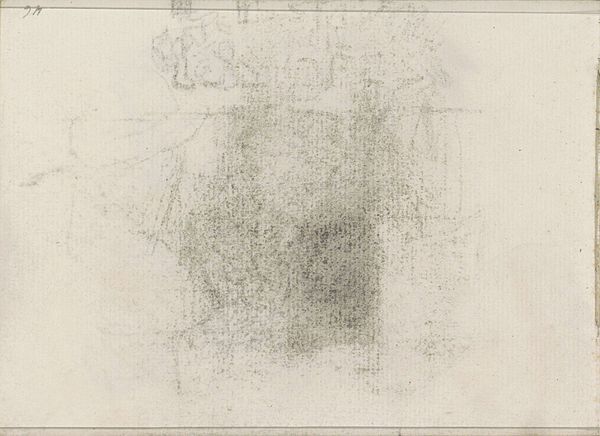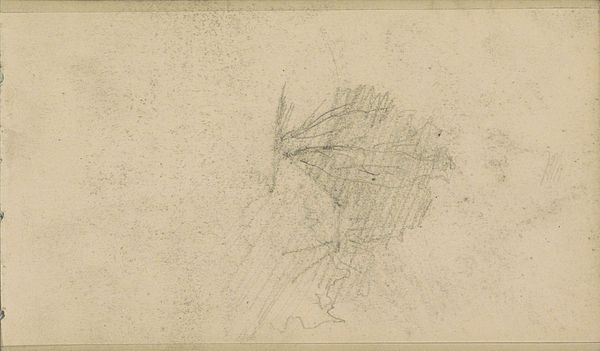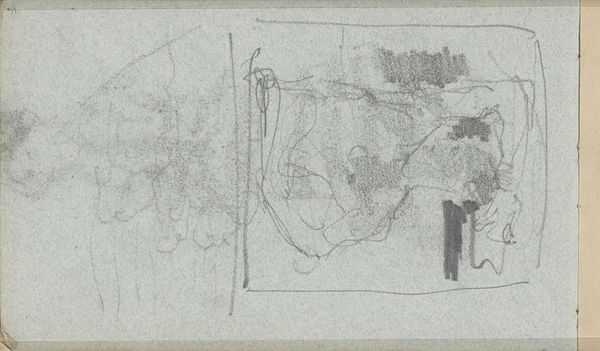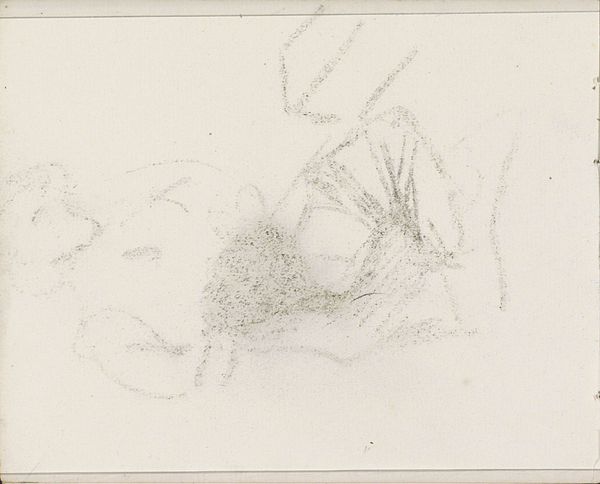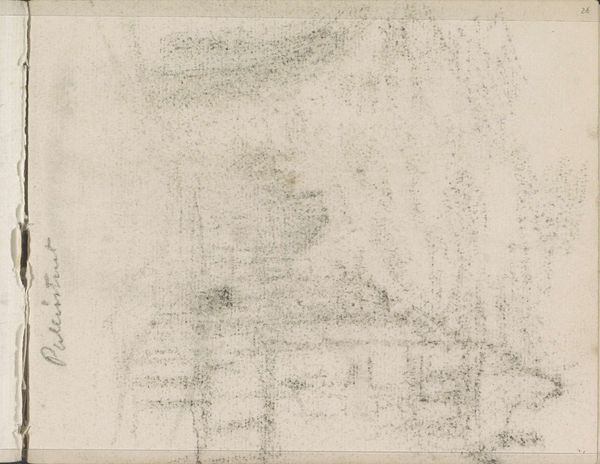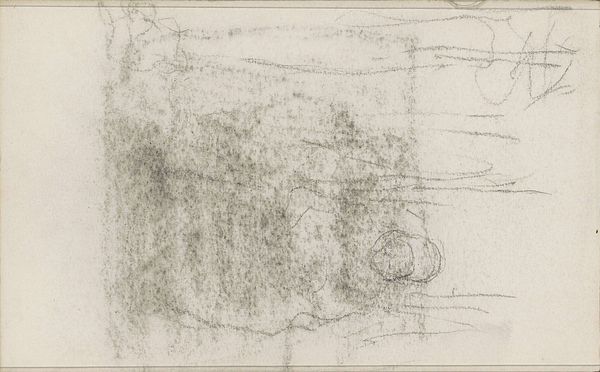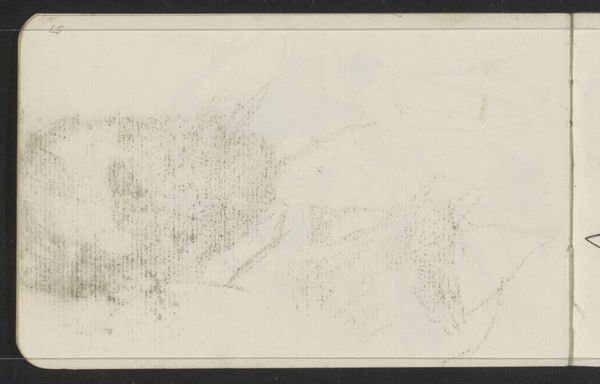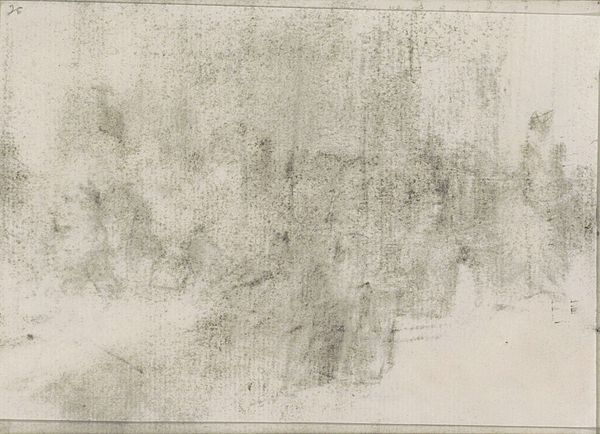
Copyright: Rijks Museum: Open Domain
Curator: Oh, my first impression is a little blurry. It’s got this lovely soft quality like memory itself. Editor: Indeed. What we have here is an impressionistic graphite drawing, now held at the Rijksmuseum, called “Abklatsch van de krijttekening op blad 15 recto” by Isaac Israels, created somewhere between 1886 and 1934. Curator: "Abklatsch..." I love that! It already tells us something about the technique—like a transfer or rubbing. It explains that hazy feeling, almost like seeing a ghost of a portrait. Editor: Exactly. The word "abklatsch" refers to a transfer, or counter-proof, creating a reversed and often softened impression of the original chalk drawing. I think that term suits it beautifully. This piece shows figures – maybe studies of men, considering their hats - captured in a state of transit. There's one face, on the right side of the drawing, that seems much more defined than the rest of the other figures. Curator: Fascinating. All these ghostly shapes suggest such a transient vision of social gatherings, don’t they? Do you think Israels was attempting to capture a scene flitting by, a kind of Impressionistic study of ephemeral encounters? Editor: I do! And maybe reflecting more profoundly about life. Consider, if you will, the top hat: what might this cultural signifier have represented in fin-de-siècle Amsterdam? Who would have worn it? Curator: Definitely a symbol of a certain societal standing, but one perhaps, even then, already slipping from daily use. The sketch captures that transience, literally the ghost of social performance fading away! Editor: Perhaps he knew, intuitively, the ephemeral nature of impressionism. Or maybe Israels just liked the accidental qualities of the “abklatsch” technique. It allows the subject to partially hide while it’s being revealed, right? Curator: I do think it has the effect of capturing something beyond outward appearances. Perhaps revealing hidden uncertainties of status. This sketch hints at more than just simple portraiture! It brings to mind deeper musings on presence, absence, and time. Editor: That's beautifully said. All this discussion only serves to emphasize my earlier point, namely how the use of graphite is key. We are led to focus on texture and depth using this soft medium which adds so much character to these figures, whether corporeal or imagined!
Comments
No comments
Be the first to comment and join the conversation on the ultimate creative platform.
